1. Construction product Regulation (EU) 305/2011 – A guide for manufacturers and importers that sell and market construction products to the EU market.
This article is meant to be an extensive summary of the Product Compliance requirements for Construction Products made available on the EEA market. It is limited to Construction Product specific requirements and will not consider requirements on for example restricted chemicals or packaging waste.
The information in summarised primarily from:
- The Construction Product Regulation No. 305/2011
- The European Commission’s web page for CPR
- The European Organisation for Technical Assessment’s web page
With supplementary information and clarifications from:
- The Swedish National Board of Housing, Building and Planning
- Notified bodies
- Additional official EU sources
The article is not meant to be a complete guide to product compliance, but instead as an approachable overview of the subject or perhaps as a reference for certain hard to grasp concepts. The article aims to answer such questions as:
- Is my product considered a construction product?
- Do I need to CE mark my product?
- What is required of me before I can CE mark my product?
- What are my responsibilities as an importer?
2. What is CPR?
2.1. Construction Product Regulation No. 305/2011
The Construction Product Regulation (CPR) No. 305/2011 is the legislation that covers conditions for construction products that are placed or made available on the market. The CPR does not aim to define rules on the performance of construction products, instead it defines a framework of harmonised rules on how the performance must be tested and presented in the technical documentation of the product.
2.2. What is the definition of a construction product?
A product or kit for permanent incorporation in a building or civil engineering work. This covers among other things, products used in the construction of buildings and other works (such as cement, masonry and structural timber products), products commonly placed within buildings in a “permanent” application (such as doors, flooring, power cables and ventilation ducts) and also road construction products. The non-specific definition of construction products makes it impossible to define an exhaustive list of products covered under CPR, and this is likely by design.
2.3. Basic requirements for construction products
As the basis for the entire legislation around building products, there are seven basic requirements as stated in Annex I of CPR. A construction product must have:
- Mechanical resistance and stability
- Safety in case of fire
- Hygiene, health and the environment
- Safety and accessibility in use
- Protection against noise
- Energy economy and heat retention
- Sustainable use of natural resources
Although these have further descriptions as stated in Annex I of CPR, they are still left as vague requirements. Requirements like “Construction works must also be energy efficient […]” and “The construction works must […] not be a threat to the hygiene or health and safety of workers […]” have no inherent way to be complied with. These are defined in the CPR as guidelines for essential characteristics that are defined within harmonised technical specification.
3. CE marking of construction products
3.1. The CE-mark
In general, the CE mark is placed upon products as a statement by the manufacturer that they take full responsibility for the conformity of the product under EU-legislation. This responsibility is stated in a Declaration of Conformity (DoC).
For construction products, the CE mark instead means that the manufacturer takes full responsibility for the validity of the performance stated in the Declaration of Performance (DoP). The member states are responsible for defining what construction products are compliant , and are allowed to prohibit the use of CE marked construction products if they do not meet the national requirements of performance. This is likely a result of building regulations still being to a considerable extent on a national level. The requirements set by member states in relation to the essential characteristics are required to be in accordance with methods used in harmonised standards. The CE mark therefore ensures that the product has a reliable and standardised DoP that can be used to compare against national requirements.
3.2. Harmonised technical specification
A construction product can only be CE marked if the performance characteristics under CPR have been evaluated according to a harmonised technical specification. These specifications define the criteria for performance, methods to test these criteria and what system is needed for constancy of the performance. There are two types of harmonised technical specifications are harmonised standards (hEN) and European Assessment Documents (EAD).
3.3. Harmonised standards (hEN)
When a construction product has all its essential characteristics fully covered under hENs, it is required that these are used in assessing the performance of the product. A product fully covered under hENs must be CE marked.
3.3.1. What does a hEN include?
A standardised method for evaluating characteristics and/or performance. Not necessarily defining the limits for compliance with legislation.
3.3.2. Assessment and Verification of Constancy of Performance (AVCP)
To ensure that products under CPR maintain their declared performance throughout its entire span of production, five systems of AVCP are defined in the CPR. The AVCP systems define how production control must be performed by the manufacturer and a notified third-party. Harmonised technical specifications state the required AVCP system for the performance tested under that specification.
AVCP are divided into five systems, with a decreasing level of third-party assessment, as defined within Annex V of the CPR:
1+ – Production control and sample testing by manufacturer. Type test, inspection, surveillance and auditing by notified body.
1 – Production control and sample testing by manufacturer. Type test, inspection and surveillance by notified body.
2+ – Type test, production control and sample testing by manufacturer. Inspection and surveillance by notified body.
3 – Production control by manufacturer. Type test by notified testing laboratory.
4 – Type test and production control by manufacturer
3.4. European Assessment Documents (EAD)
Products not covered or partially covered by hENs have the option of using EADs instead or in addition to hENs when assessing performance. This option is not limited to the EADs already published, the EOTA (with experts and other actors) will develop an EAD if one does not already exist when a product is submitted for assessment. The development of the EAD comes at no additional cost to the assessment.
3.4.1. Voluntary CE mark
The use of EADs is an entirely voluntary option, which can be used to CE mark products that otherwise were not eligible for the CE mark. Voluntarily CE marking a product can both be a way to make a product stand out (“The only CE marked type-product on the market!”) as well giving the product a performance assessment which is recognised across Europe.
3.4.2. EOTA and ETAs
The development of EADs are organised by the European Organisation for Technical Assessment (EOTA), which is a body established under CPR for just this purpose. When a product is assessed using EADs by a Technical Assessment Body (TAB), a European Technical Assessment (ETA) will be issued that will be the basis for the DoP of the product.
If a product has been issued an ETA, the CE marking is no longer voluntary but mandatory.
3.4.3. AVCP
In the ETA, the system of AVCP required will be stated, the same as for hENs.
3.5. Declaration of Performance (DoP)
The DoP is the main document that is needed for products that are to be CE marked under the CPR. This declaration presents the performance in a harmonised manner which is designed to ease the comparison of the performance of products in relation to other products or any requirements of performance. The DoP must be made available in the language required by the member state where the product is sold. Available in this case means supplied in paper form, electronic means or on a web site (must be available for 10 years after the product is placed on market).
A DoP shall contain the information as defined in Art. 6, with the model of Annex III of the CPR. The most notable information in a DoP is the:
- Intended use of the product
- System(s) of AVCP for the product
- Applied harmonised technical specification(s)
- A list of essential characteristics as defined in harmonised technical specification(s)
- The performance of essential characteristic(s) related to the intended use of the product, at least be one*
*Since harmonised technical specifications can define essential characteristics outside the intended use of a product, non-related characteristics can be declared “NPD” (No Performance Determined).
3.5.1. Declaration of Conformity (DoC)
Under the CPR, products are not required to have a DoC. But construction products that fall under other CE marking directives and regulations might need a DoC to be drawn up in addition to the DoP.
3.6. Placing the CE-mark on the product
After a DoP has been drawn up for a product, it must then be CE-marked. Placing the mark during the process of drawing up a DoP is not allowed. When possible, the mark must be placed on the product itself or an attached label, when this is not possible the mark can be placed on the packaging or documents provided with the product.
The CE-mark is the only allowed marking of a construction product that imply the conformity of declared performance in relation to the essential characteristics defined in applied harmonised technical specifications.
4. National requirements
All construction products are subject to national requirements, whether they are CE marked or not. The benefit of CE marked products is that their methods for assessing performance are harmonised and therefore always accepted by member states. As such the performance of a DoP can always be used as a reference against national requirements.
4.1. National contact points for construction
Every member state of the EU is obliged to answer questions regarding the national legislation of construction products through their national “contact points for construction” (NCP). Note that these are different from the “product contact points”.
4.2. Construction products without CE marking
A construction product not fully covered by hENs, and without an issued ETA, cannot be CE marked. Without a DoP and CE mark, construction products must follow national legislation in whichever manner that member state requires.
4.3. Construction products in Sweden
As a Swedish based business, we will only go into the national specifics of Sweden.
4.3.1. Legislation
The Swedish provisions for construction products are primarily defined by The Swedish National Board of Housing, Building and Planning (Boverket). The main legislative document is the Planning and Building Ordinance (PBL), this document defines the basic requirements for construction products in Sweden. They mostly correspond to the basic requirements of construction products as laid down in the CPR, but with the additions:
- Accessibility and usability for individuals with reduced mobility or sense of direction
- Economical management of water and waste
- Broadband access
Boverket also has other documents with provisions, such as the Boverket’s building regulations (BBR) and the Application of the European construction standards (EKS). Other authorities such as the Swedish Work Environment Authority and the Swedish Board of Agriculture also have provisions for construction in specific cases.
In Sweden it is the developer that is responsible for ensuring that the product is suitable for its intended application. So there is no legal requirement for manufacturers to only place products that are compliant with the national legislation on the market. But due to their legal responsibility, developers are unlikely to purchase products that cannot prove compliance.
4.3.2. Type approval
Sweden has implemented a voluntary system of national type approval for construction products not covered by hENs (or ETAs). This system enables construction products to get an accredited certification stating that they are compliant with Swedish building regulations. The type approval can be performed by either of the two accredited bodies, RISE or Kiwa Certification AB and is typically valid for five years. The certification also comes with requirements on internal production control and in most cases with supervision of a third-party.
Construction products with a national type approval certification can also be marked with the National Board of Housings “Building and Planning fork”.
Swedish type approval does not ensure that a product is valid under the national legislation of any other Member state within the EEA. But the performance documents supplied can be used as documentation of specific performances, this should always be verified by contacting relevant NCPs.
5. Exceptions with simplified procedures
The EU has recognised several cases where the complete process for CPR could be prohibitive and has therefore included some exeptions.
5.1. Appropriate Technical Documentation
The CPR defines three cases where a DoP can be drawn up without testing for all essential characteristics. Instead in these cases, Appropriate Technical Documentation can be used. If the product has AVCP system 1+ or 1 the Appropriate Technical Documentation needs to be verified by a notified product certification body.
- If conditions in the relevant hEN or Commission decision allows for a certain level of performance to be declared without testing.
- If another product manufactured by another manufacturer corresponds to the product, and the other manufacturer authorises for their test results to be used. For example, in the case of private labelling.
- If the construction product is a system of components, and the supplier of all or some of the components have already tested the system or components. Then they can authorise their test results to be used.
5.2. Exemptions from DoP
The CPR defines three categories of construction products that does not need a DoP even if covered by hENs. For these the applicable national rules can be used instead.
- Individually manufactured or custom-made products from a non-series production and installed into a single construction work.
- Construction products that are manufactured on the construction site where it is incorporated.
- Construction products manufactured in a non-industrial and traditional manner for renovations of constructions protected as part of a designated environment, because of their special architectural or historic merit.
5.3. Simplified AVCP
If either of these simplified procedures are used, the manufacturer shall draw up a Specific Technical Documentation that demonstrates the equivalence of the procedures used to the ones defined in the hENs.
5.3.1. Micro enterprises
Micro enterprises (as defined in commission recommendation 2003/361/EC), with fewer than 10 employees and an annual balance sheet below EUR 2 million, are allowed use different methods for testing then those specified in the applicable hENs if they are within the AVCP systems 3 or 4. They may also apply system 4 for products that would otherwise be applicable under system 3.
5.3.2. Custom-made products
Individually manufactured or custom-made products from a non-series production and installed into a single construction work, do not need a performance declaration.
6. Obligations of economic operators
The CPR defines four groups of economic operators with different obligations. These obligations are not specified for CE marked products, but all products that fall under the scope of the CPR. Some obligations are only applicable to products that have been CE marked.
All economic operators (except Authorised representatives) are responsible for ensuring that a product that they place on the market is compliant with the requirements set out in the CPR. If any economic operator considers that one of the products that they have placed on the market is not compliant they must bring that product into conformity or recall it. All economic operators must cooperate with competent national authorities when requested.
The following sections are summaries of the obligations for the different economic operators. Chapter III of the CPR lays out the obligations in detail, and the relevant articles should be read in full by all economic actors before placing a construction product on the market.
6.1. Manufacturer
The responsibility of drawing up the relevant technical documentation, testing the product and performing the relevant system of AVCP is held by the economic actor considered the manufacturer.
Importers or distributors are deemed to be the manufacturer when they place products on the market under their own name or trademark, sometimes called “private labelling”. They are also deemed to be the manufacturer if they modify the product in a manner that might affect the declared performance.
In summary the responsibilities of the manufacturer are to:
- Draw up a DoP and affix the CE mark
- Keep technical documentation for 10 years after construction product is placed on market
- Ensure that production maintains declared performance*
- Ensure the traceability of the product
- Supply the product with instructions and safety instructions in the language required by the member state where the product is sold.
- Keep register of complaints, non-conforming products and product recalls.
- Contact national authorities if product is no longer deemed compliant and therefore presents a risk
*Note that it does not mention AVCP specifically.
6.2. Authorised representative
A manufacturer can assign an authorised representative to be responsible for keeping the technical documentation and supplying that documentation at the request of national authorities. Authorised representatives can also act as the legal EU-operator for manufacturers from outside the EU (required since 2020). If you want to know more about authorised representative, you can check out this article.
6.3. Importer
When importing construction products into a EEA member state, the importer must ensure that the manufacturer has performed their responsibilities:
- Drawn up a DoP and affixed the CE mark
- Performed assigned AVCP
- Made the product traceable
- Has the correct documentation for the product
In addition, the importer must:
- Supply their contact information on or with the product or ensure that there is contact information to another EU placed economic actor. Requirement for an economic actor based in the EU is amended into the CPR by regulation 2019/1020, learn more here.
- Ensure that the product is supplied with instructions and safety instructions in the language required by the member state where the product is sold.
- Ensure that the performance of the product is not compromised during transport or in their care
- Keep register of complaints, non-conforming products and product recalls.
- Keep a copy of DoP and ensure the availability of technical documentation for 10 years after product is placed on market
- Contact national authorities if product is no longer deemed compliant and therefore presents a risk
6.4. Distributor
As the distributor of a construction product, one is obliged to ensure that the manufacturer and importer has met their responsibilities:
- Product is affixed with the CE mark
- Product has the correct documentation
- Product is supplied with instructions and safety instructions in the language required by the member state where the product is sold.
- Product is traceable to the manufacturer and when relevant the importer
In addition, the distributor must
- Ensure that the performance of the product is not compromised during transport or in their care
- Contact national authorities if product is no longer deemed compliant and therefore presents a risk
Want to know more?
If you want to know better how Zatisfy can help with complying with this regulation please read more here, send an email to [email protected] or schedule a free 25 min appointment with one of our experts here.




